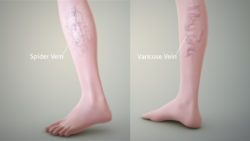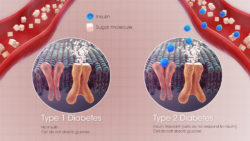The purpose of treating varicose veins is to fade them. This is done by simply closing them off and redirecting the blood flow through them to other veins. Several types of procedures can do this. Let’s talk about them a little:
- Laser therapy: No cuts or needles involved. The procedure involves zapping the vein with bursts of high-intensity light to close it off. Laser therapy is used mostly for smaller varicose veins.
- Endovenous ablation therapy: In this, your doctor first numbs the area around the vein in focus. Next, a thin tube is inserted inside it through a small cut in your skin. The tube bears a device that uses a laser or radio wave to create heat that closes the vein.
- Sclerotherapy: Sclerotherapy is often considered the treatment of choice for small varicose veins.
- Microsclerotherapy: To treat smaller varicose veins, a smaller, finer needle is used to perform a procedure similar to sclerotherapy.
The procedure is can take 10 to 30 minutes depending on the size and number of varicose veins to be treated. The affected leg is elevated to drain blood, and the sclerosant is injected into the varicose vein. One may need more than a single sitting, usually in a gap of 4 to 6 weeks, to completely close off a vein. It is usually advised to wear compression stockings for a few weeks after each procedure.
Sclerotherapy in detail
During the sclerotherapy treatment, the proximal sites of reflux and larger veins are treated before smaller vessels. Every affected vein (small or large) should be treated in a single session.
It is important to ensure excellent lighting and comfort of both the physician and the patient before starting the session. The injection should be precise and slow. The procedure is mostly painless, but in case of leakage of blood (extravasation), pain or burning sensation may occur. In that case, the site is injected with normal sodium chloride solution or lidocaine to dilute the sclerosant.
Ulceration may occur post extravasation in the pretibial area and ankle skin. Therefore these locations should only be treated limitedly and never first. Hyaluronidase and nitroglycerin paste can be used for prolonged blanching and reduce the rate of ulceration.
Each injection is usually 0.1-0.4 mL and carried out at 2-3 cm intervals until the entire vessel has been cleared. Small injection volumes and low injection pressure prevent any adverse effects.
Wearing compression stockings (23-32 mm Hg) for 3 weeks improves clinical vessel disappearance. Lower extremity exercises may also be advised, while rigorous exercise or activity is not allowed for up to 4 weeks.

The Science behind Spider Veins
Varicose and spider veins are the same disease process which differ in severity and size. Spider veins are smaller (1-3 mm) and appear bluish red under the skin, while varicose veins are larger and more dilated veins which typically bulge out above the skin level. Read More..

Screenophilia: The Problem Is Real Now
That’s the standard single line solution our moms offer us to all our problems. This constant blaming that the phone is always the cause of the problem has made us so immune, because, after all, not every problem can be traced back to the device, right? Read More..

Does Prediabetes mean that you’ll get Diabetes?
It hasn’t been very long since doctors started using terms like ‘prediabetes’ or ‘borderline diabetes’, to indicate the state of a person during the period before he/she becomes plainly and clinically diabetic. Unfortunately, the terminology is quite vague as it doesn’t clearly state anything. Read More..








